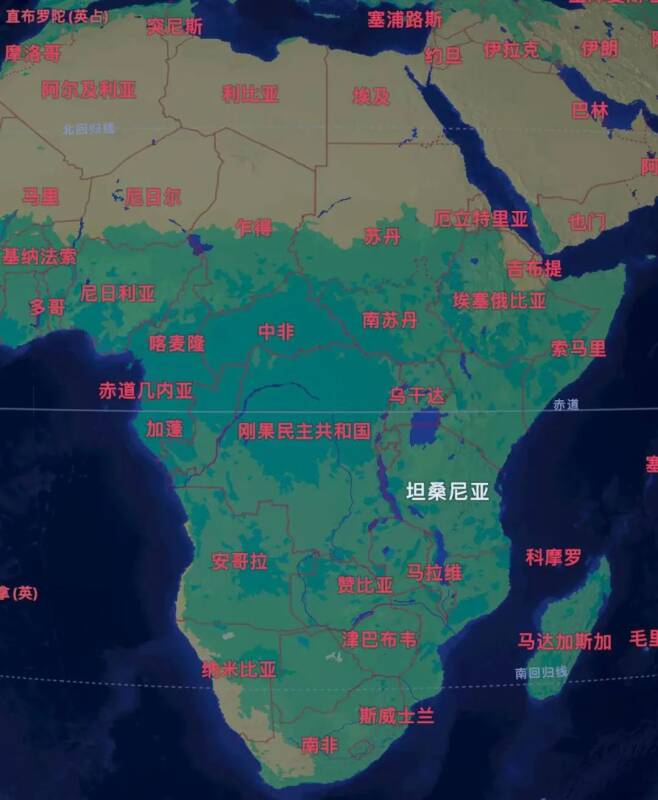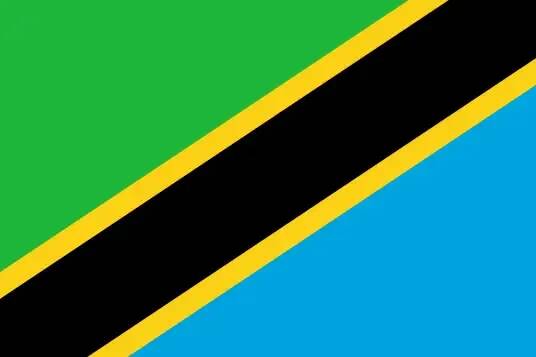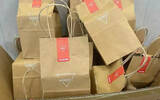Tanzania| Introduction to coffee beans in Kilimanjaro region
Tanzania Tanzania
In the African region, there are many well-known coffee producing countries, such as Ethiopia, Kenya, Rwanda and Tanzania, among which Tanzania is one of the three giants of African coffee. Tanzania (The United Republic of Tanzania) is located in eastern Africa, south of the equator, composed of Tanganyika (mainland) and Zanzibar (island), is a land and sea country. It is bordered by the Indian Ocean to the east, bordering eight countries, including Kenya, Uganda, Burundi and Rwanda, with a land area of 945000 square kilometers.

Tanzania is one of the birthplaces of ancient mankind, but it is also one of the least developed countries in the world. Its economy is mainly agriculture, and it is rich in mineral and tourism resources. The topography of the country is high in the northwest and low in the southeast, the eastern coast is a lowland, and the western plateau accounts for half of the total area of the country. The East African Rift Valley runs from east to south from Lake Malawi, with Mount Kilimanjaro, the highest peak in Africa.
The eastern coast and inland lowlands of Tanzania have a savanna climate, while the western inland plateau has a tropical mountain climate, with an annual average temperature of 21 ℃-26 ℃. Although the country has less rainfall, with less than 1000 millimeters in 80 per cent of the region, Tanzania has many rivers and lakes and is rich in hydropower resources.
The face of the Tanzanian flag is made up of green, blue, black and yellow. The upper left and lower right corners are two equal right triangles of green and blue. The wide black stripes with yellow edges run diagonally from the lower left corner to the upper right corner. Green represents land and symbolizes belief in Islam, while blue symbolizes rivers, lakes and seas, black represents black Africa, and yellow symbolizes rich mineral resources and wealth.

Coffee producing area
90 per cent of Tanzania's coffee comes from 450000 small farmers and the other 10 per cent from larger estates. At present, nine production areas are divided, and the relatively well-known ones are Kilimanjaro (Kilimanjaro), Arusha (Arusha), Ruvuma (Rovuma), Mbeya (Mbeya), Tarime (Tarim) and Kighoma (Kigoma).
Kilimanjaro (Kilimanjaro): Mount Kilimanjaro, located in northeastern Tanzania, is the highest mountain on the African continent, with an elevation of 5895 meters and perennial snow. It is mainly composed of three extinct volcanoes, Kibo, Mavenz and Sheila. Coffee is grown in areas 1050-2500 meters above sea level. High enough altitude, volcanic soil, and pure snow-melting water are the most suitable areas for growing coffee. The harvest time of coffee in Kilimanjaro is from July to December every year, and the main varieties are bourbon, iron pickup and Kent.
Arusha (Arusha): Arusha is adjacent to the producing area of Mount Kilimanjaro, so there are many similarities between the two areas, which also have volcanic soil, but the area is only 1100-1800 meters above sea level and the harvest time is from July to December each year.
Rovuma (Ruvuma): this area is located in the southernmost part of Tanzania and is named after the Rovuma River and is considered to be able to produce high-quality potential production areas. In the past, it was difficult to develop because of lack of funds. The altitude is 1200-1800 meters, and the harvest period is from June to October.
Mbeya: located around the city of mbeya in Mbeya in southern Tanzania, it is an important producing area for growing coffee, tea, cocoa and spices. it is at an altitude of 1200-2000 meters, and the harvest time is from June to October.
Tarime: located in the northernmost part of Tanzania, near the Kenyan border. But international fame is limited, and Arabica and Robusta varieties are grown in the region. The altitude is 1500-1800 meters, and the harvest time is from July to December.
Kighoma (Kigoma): the region, named after the regional capital city of Kigoma, is located in the north-west of the country, near Burundi, where the coffee industry is just beginning. The altitude is 1100-1700 meters, and the harvest period is from July to December.
Iron pickup Typica
Both Typica and Bourbon are among the oldest coffee varieties in existence and originated in southwestern Ethiopia. On the other hand, on the Tieka coffee plant, the leaves are ridged and pointed at the end, the leaves are green and bronze, the distance between the fruit nodes is long, the fruit is mainly red, the coffee bean shape is long, and the whole plant is taller. It is more suitable for planting in high altitude areas, and the quality of planting at high altitude is better, but the yield is low, and it is very easy to suffer from leaf rust, nematode and berry disease. Most coffee plantations in South and Central America grow iron pickups, but they are gradually replaced because of their low production and susceptibility to disease, but they are still grown in Peru, Tanzania, Jamaica and other countries.
Qianjie Coffee Tanzania Kilimanjaro Coffee Bean production area: Kilimanjaro production area altitude: 1300-2000 m Variety: iron truck treatment: washing flavor: citrus honey berry nut tea feeling
The beans from the Kilimanjaro producing area of Qianjie Coffee are washed and moderately roasted. Qianjie will use the proportion of V60 Jade 15, 92 ℃ water temperature for cooking, the entrance will have a soft acidity, with citrus, berry, honey and nut flavor, soft tea taste, overall balance.
Important Notice :
前街咖啡 FrontStreet Coffee has moved to new addredd:
FrontStreet Coffee Address: 315,Donghua East Road,GuangZhou
Tel:020 38364473
- Prev

Teach you to make purified milk at home! Should I put the ice blog in the refrigerator or melt it at room temperature?
Espresso is important in a cup of milk coffee, but milk also plays an indispensable and key role. Choosing the right milk can give the coffee a thick taste and sweetness, and also bring out a concentrated and unique cocoa aroma, which greatly enhances the layered feeling of the whole cup of drink. In recent years, with the introduction of purified milk
- Next

Can't you give out Manner cups?! Netizen: Tired of
▲ Click attention| Among the various brands in the Daily Boutique Coffee Culture Magazine Coffee Factory, Manner should be the one who delivers cups most diligently. Just buy a set meal and you can bring a good quality gift cup home. It is a cost-effective activity for many Manner users, and therefore it is a good activity.
Related
- What effect does Italian American coffee with filter paper have? Will coffee taste better if it is put on filter paper at the bottom of the powder bowl?
- What is the color difference in coffee beans? What are the characteristics of honey processed coffee beans? Why are the anaerobically treated coffee beans uneven in color?
- How does novice Xiaobai quickly get started and make coffee? Newbies learn to make coffee by hand and share the specific steps and process process!
- Costa tea has a shelf life of 100 years?! Expert: Unable to verify
- It's a huge uproar! American milk addition was rejected by Manner employees?!
- Mocha pot coffee bean recommendations| How fine and how much powder should be used for grinding? What parameter ratios do I need to use to make milk with Mocha pot coffee?
- What are the characteristics of the world's top ten coffee beans treated with Costa Rica honey? How to make black honey kadura from Tarazhu Pilon Processing Plant taste good?
- How to make deep-roasted coffee? What grinding water temperature does authentic Jamaica Blue Mountain No. 1 coffee use to brew it well?
- Selected high-grade rose summer coffee flavor tasting guide Why Panama rose summer has the aroma of flowers and fruits
- What equipment does a novice Xiaobai need to buy to learn to make coffee? Filter cup electronic scale bean grinder manual flushing pot purchase guide

